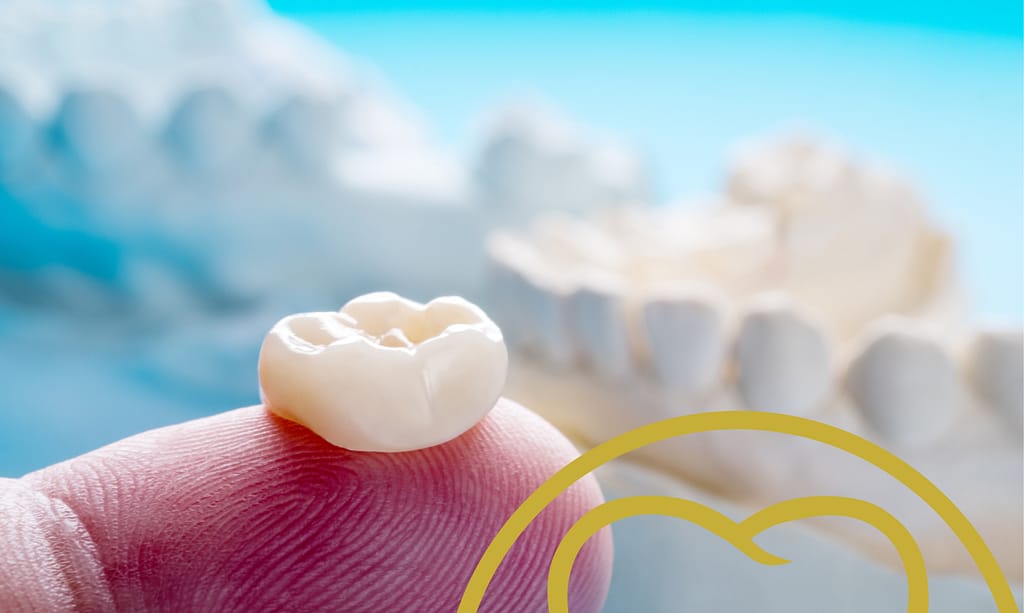How Fillings and Dental Crowns Address Different Levels of Tooth Damage

Comparing Two Popular Restorative Dentistry Solutions
Every day, millions of people around the world grapple with dental issues ranging from simple cavities to extensive tooth decay. It’s a reality that can cause discomfort and rob the joy of a healthy, radiant smile. But thanks to the advancement in restorative dentistry, damaged teeth no longer mean a damaged smile. With procedures like dental fillings and dental crowns, dentists can repair and restore teeth, essentially giving our smiles a second chance.
Today, we will dive into two of the most popular restorative dentistry solutions—dental crowns and dental fillings. Both serve the same purpose of restoring damaged teeth, but their applications are vastly different. Understanding these differences is crucial to help determine which solution is best suited for your needs based on the extent of the tooth decay.
Different Levels and Causes of Tooth Damage
Tooth damage presents itself in various forms, from minor decay to severe fractures and extensive cavities. The scale of damage significantly influences the choice of dental restorative treatment. Minor decay often takes the form of tiny cavities on the tooth surface, visible as white or brown spots. If left untreated, this can progress to moderate decay, where the cavities deepen, affecting larger portions of the tooth and causing discomfort.
In more severe cases, extensive cavities can compromise the entire tooth structure, leading to fractures or deep decay that reaches the tooth’s nerve. This extensive damage often results in significant pain and sensitivity, requiring more extensive restorative procedures.
Various factors contribute to tooth decay. The most common is bacterial plaque that accumulates on the tooth surface and produces acids, leading to demineralization and cavity formation. Other causes can include trauma, leading to chips or cracks in teeth, and abnormal wear and tear due to habits like teeth grinding (bruxism) or consuming hard or acidic foods and drinks regularly.
Dental Fillings: Ideal for Small to Moderate Cavities
Dental fillings are a common, less invasive restorative treatment used primarily to fix minor to moderate tooth decay. They are crafted from various materials, with tooth-colored composites or porcelain being the most popular due to their aesthetic appeal.
Tooth-colored fillings blend naturally with your teeth, preserving the original appearance of your smile. Besides aesthetics, these fillings are highly durable and provide excellent resistance to fractures in small to midsize fillings that require withstanding moderate pressure from the constant stress of chewing.
The process of placing a filling involves first removing the decayed tooth material, cleaning the area, and then filling the disinfected cavity with the filling material. This procedure eliminates the decay and prevents further damage by sealing off any potential spaces where bacteria can infiltrate.
While dental fillings are an effective solution for minor to moderate cavities, their suitability depends on the extent of the decay, the location of the tooth, and personal preference.
Dental Crowns: Saving Teeth From More Extensive Damage
Dental crowns come into play when a tooth has sustained more substantial damage or decay that a simple filling cannot adequately fix. A dental crown encases the entire tooth surface, restoring it to its original shape and size. It provides a shell of protection around the compromised tooth, offering strength and support to prevent further damage.
The process of preparing a tooth for a crown placement often necessitates two visits to the dentist. During the first visit, the dentist will anesthetize the area and then reshape the tooth so the crown can properly fit over it. After the tooth is reshaped, a mold or impression is taken of the tooth and sent to a dental lab where the crown is created. During this time, a temporary crown is placed to protect the prepared tooth. The second visit, typically a few weeks later, involves the fitting and cementing of the permanent crown onto the tooth.
Dental crowns completely mimic the functionality of a natural tooth, both in terms of look and feel. They’re also durable and typically last well over 10 years, making them an excellent solution for significant decay or damage. However, just like natural teeth, it is important to maintain a good oral hygiene routine to keep the crown and underlying tooth healthy.
How to Decide Between a Dental Filling or a Dental Crown
Making an informed decision when choosing between dental fillings and dental crowns is paramount to both preserving your oral health and optimizing your personal comfort and satisfaction. Several factors come into play when deciding which procedure is most suitable, with the most critical consideration being the extent of the tooth damage. Fillings are typically the go-to solution for minor decay, while crowns are reserved for more extensive damage.
It’s essential to consult with your dentist, who can provide a personalized recommendation based on a professional evaluation of your oral health. They will guide you toward the option that best serves your specific needs, considering both the health and aesthetics of your teeth.
Modern Dental Restorations at Dixon, Boles and Associates
At Dixon, Boles and Associates, we strive to offer superior dental care that caters to your unique needs and preferences. As your trusted family dentist in Wilson, NC, we are ready to help you navigate the choices between dental fillings and dental crowns, ensuring you receive the most appropriate and beneficial treatment. Our commitment is to your overall oral health and well-being, as well as to the aesthetic appeal of your smile.Don’t let tooth decay disrupt your life—reach out to us today to schedule an appointment and discover the best restoration solution for you.